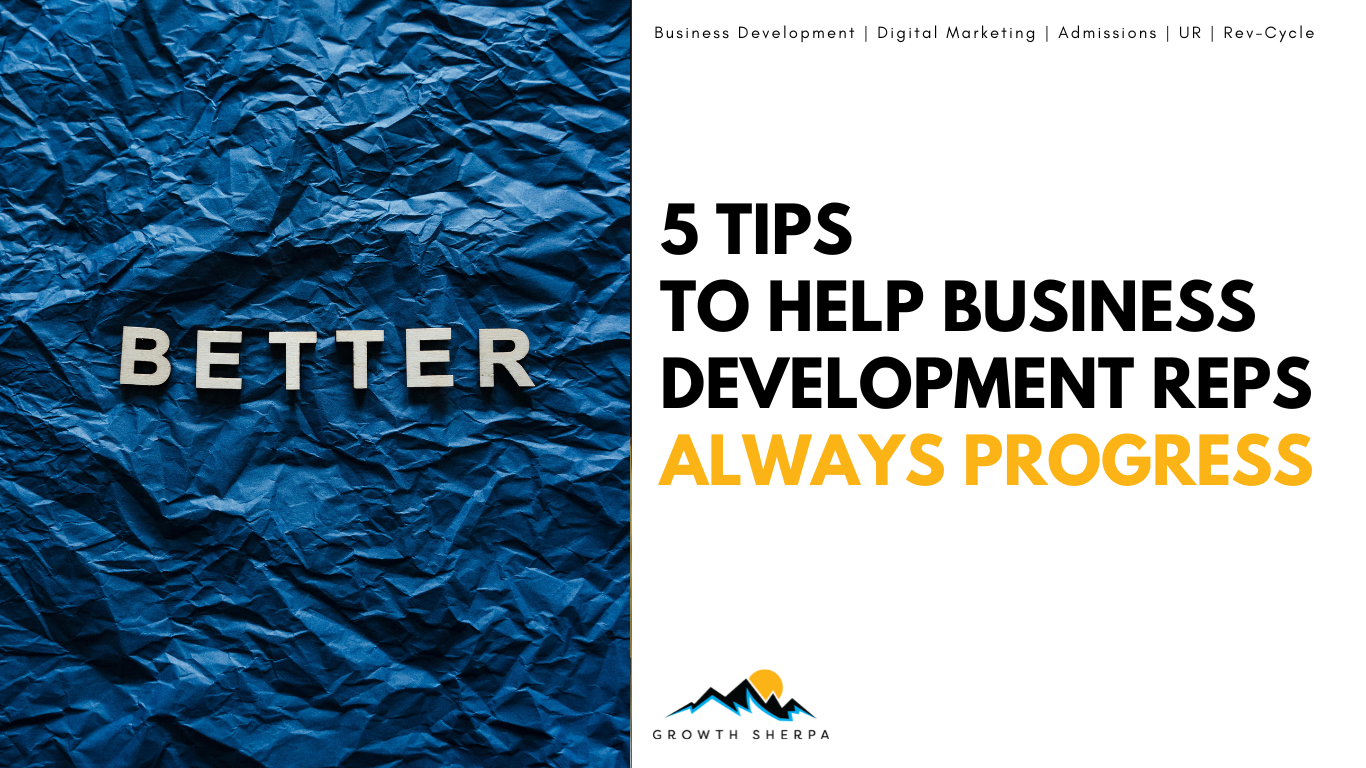As the founder of Growth Sherpa Consulting, I’ve spent years helping behavioral health organizations grow their patient base and strengthen their referral pipelines. One of the most critical components of that growth is the role of business development representatives (BDRs). These professionals are the front line of an organization’s outreach, responsible for building relationships, generating leads, and ensuring that more individuals get the treatment they need. But success in this space isn’t just about making calls and setting meetings—it’s about strategy, persistence, and adaptability. If you want to make an impact as a BDR in behavioral health, here are five key tips to help you always progress and stay ahead of the competition.
1. Build Genuine Relationships, Not Just Referral Sources
Behavioral health is a relationship-driven industry. A BDR who treats contacts as transactional sources of referrals will struggle to gain long-term traction. Instead, focus on building genuine relationships with potential referral partners, community organizations, and other stakeholders in the healthcare ecosystem.
Relationships in this field are built on trust. A hospital discharge planner, an independent therapist, or an interventionist will only refer to a facility if they believe in the quality of care provided. That means as a BDR, you need to be more than just a salesperson—you need to be an educator, a consultant, and a trusted partner. Take the time to understand the needs of your referral sources, educate them on your facility’s treatment modalities, and show them how working together can benefit their patients.
2. Master the Art of Follow-Up Without Being Pushy
A single touchpoint is never enough in business development. Many BDRs fail simply because they don’t follow up consistently, while others fail because their follow-up strategy is too aggressive. The key is to strike the right balance.
The best follow-ups are personalized and value-driven. Instead of just checking in to ask, “Do you have any referrals for us?” offer something useful in every conversation. Share a recent success story, provide an update on a new program, or send over relevant industry news that might interest them. Timing is also crucial. If a potential referral partner tells you to check back in a month, set a reminder and reach out at that time—not earlier, not later.
3. Know Your Facility Inside and Out
It’s shocking how many BDRs struggle to articulate the unique selling points of their facility. If you can’t confidently explain what sets your program apart, why should a referral partner send patients your way?
You need to know everything about the treatment center you represent, from the clinical team’s expertise to the specifics of different levels of care. What insurance do you accept? What specialized programs do you offer? What makes your alumni support different? The more comprehensive your knowledge, the better you’ll be at handling objections and positioning your facility as the best option for patients in need.
4. Leverage Data to Refine Your Outreach Strategy
The days of relying purely on gut instinct to drive business development efforts are long gone. Successful BDRs in behavioral health use data to guide their strategies, track performance, and refine their approach.
If your organization is using a CRM like Salesforce or HubSpot, use it religiously. Track every interaction, log every meeting, and analyze the referral sources that are bringing in the most admissions. Understanding which referral partners are converting the highest number of patients allows you to prioritize your efforts. If you notice a certain hospital isn’t sending as many referrals as expected, dig into why. Are there administrative roadblocks? Do they need more education on your services? Data can tell you where to focus your energy and which efforts are yielding the best results.
5. Keep Learning and Evolving
Behavioral health is an ever-changing industry, and the best BDRs are those who continuously improve their skills and adapt to new trends. Regulations shift, treatment modalities evolve, and competition increases. Staying stagnant is not an option.
Invest in ongoing education. Attend industry conferences, participate in training sessions, and engage with other professionals in the space. Stay informed about changes in insurance coverage, new treatment methods, and the evolving needs of different populations. The more knowledgeable you are, the more valuable you become—not just to your facility, but to the referral partners who rely on you for guidance.
Growth with Growth Sherpa
At Growth Sherpa Consulting, we’ve worked with countless BDRs and seen firsthand what separates the top performers from the rest. Success in behavioral health business development isn’t about aggressive sales tactics—it’s about relationships, strategy, and a commitment to constant improvement. By implementing these five tips, BDRs can continue progressing in their careers, strengthening their referral pipelines, and ultimately helping more individuals get the treatment they need. If you’re looking for expert guidance on refining your business development efforts, Growth Sherpa is here to help. Let’s build something impactful together.




